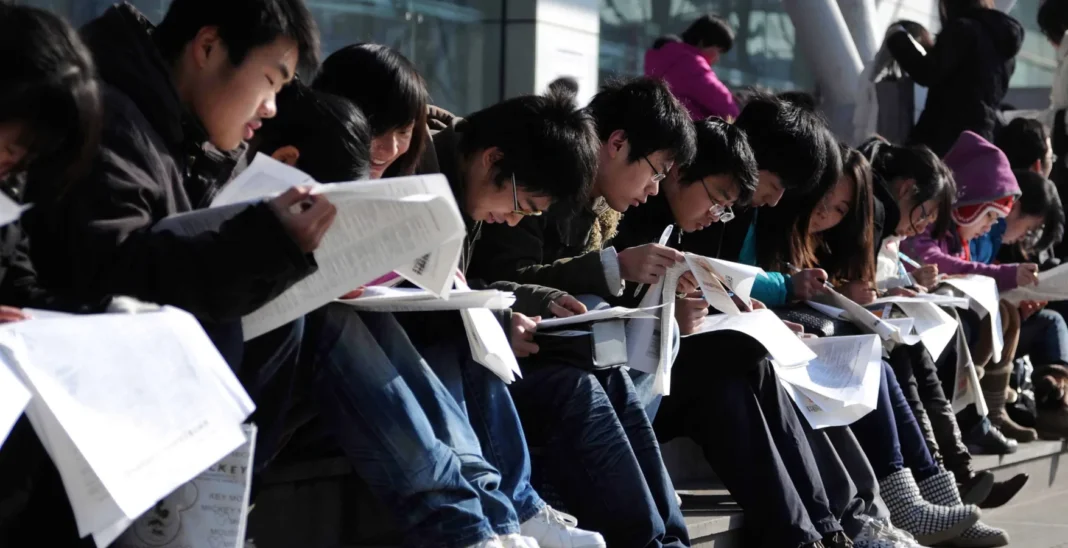China’s comprehensive surveillance apparatus, reminiscent of Orwellian dystopia, persistently monitors its populace around the clock and across all corners of the country, even penetrating into the confines of private residences. Although extensively scrutinized by scholars, journalists, and human rights advocates, the ability to document this pervasive surveillance is progressively dwindling. Classified materials are proliferating, China’s expansive academic database has been purged, and corporations like Hikvision and Alibaba are actively concealing the operational intricacies of their collaboration with the government in the realm of surveillance technology.
However, amidst these efforts, one aspect remains beyond China’s concealment—patents. While it’s true that Chinese companies may opt not to patent new surveillance technologies to maintain confidentiality, such a decision would expose them to potential replication by Western and other rivals. Patents are a matter of public record and must be explicit; any vagueness can result in denied registration. Patents necessitate a lucid exposition of the technology slated for protection.
The concept was initiated by Joss Wright, a professor specializing in Oxford Internet Studies, who, along with his counterparts Valentin Weber from Germany and Gregory Finn Walton from Canada, embarked on an illuminating endeavor. Their objective was to scrutinize patents submitted by Chinese enterprises operating within the surveillance domain. Delving into Chinese patent applications spanning the period from 2010 to 2021, they subsequently presented their findings in an article published on July 28, 2023, featured in the specialized journal “Internet Policy Review.”
Their investigation unearthed a staggering revelation: a repository of over 5,000 patents that revolve around surveillance technology. This striking proliferation has been particularly pronounced since the conception of “smart cities” was integrated into the 13th Five-Year Plan orchestrated by the Chinese Communist Party, unveiled in March 2015.
As elucidated by the authors, the concept of “smart cities” originally took root in the Western world and was introduced to China by IBM in 2008. This notion embodies the utilization of Internet-based technology to address specific urban challenges, encompassing aspects such as traffic management and crime prevention. In the context of China, the idea of “smart cities” underwent a transformation into what is termed “city brains.”
However, the scope and implications of “city brains” surpass those of their Western counterpart. This evolution is described as significantly more intrusive.
“The city brain” aims to construct a digital replica of an actual city, resulting in each element of the urban landscape having a corresponding digital counterpart, accessible to law enforcement agencies. Notably, this scope extends to the interiors of private homes, transcending the confines of public and commercial structures.
In the West, “smart cities” predominantly operate as isolated initiatives, focusing on areas like traffic regulation and intelligent street lighting.
Although occasionally aiding law enforcement responses to instances of violent crime, these initiatives remain project-specific. In contrast, as outlined in the study, Chinese “city brains” amalgamate diverse datasets within a singular unified system, allowing authorities immediate access to a comprehensive range of information. Notably, the Chinese system boasts
remarkable speed, capable of processing an astounding 16 hours of surveillance footage within a single minute.
The ever-expanding scope of universal monitoring, as indicated by the continuously evolving landscape of patent applications, is demonstrating a trajectory towards heightened totalism, pervasiveness, and swift analysis.
This trajectory, the study underscores, brings forth concerning risks to human rights. This holds particularly true for instances such as the Uyghur population’s firsthand experience, where facial recognition cameras have exacerbated racial discrimination, presenting a grave concern.
In their analysis, the authors contend that the all-encompassing, omnipresent, geographically bound, and tangible nature of smart city surveillance renders it just as hazardous as, if not more than, conventional online surveillance. The latter can only scratch the surface of a citizen’s virtual activities. In the past, individuals could escape surveillance by turning off their phones or leaving their computers behind. However, this evasion has now been rendered illusory.
This precarious situation is set to exacerbate with the intrusion of technology into private residences. The concept of “intelligent buildings,” which predates the term “smart cities” and denotes the installation of sensors throughout structures for data collection, encapsulates the notion of extending surveillance within buildings. Crucially, government surveillance is increasingly intertwined with the energy consumption of buildings. As witnessed in Xinjiang, spikes in energy usage could potentially correlate with suspicious behavior, prompting constant surveillance.
The analysis of patents, according to the authors, has yielded conclusive evidence that “emerging smart city technologies carry inherent risks to various dimensions of human rights for their residents, thus increasingly challenging the preservation of privacy and anonymity.” Whether individuals are commuting to work, navigating the streets, or residing at home, the surveillance industry is ceaselessly innovating to construct and uphold ‘digital twins’ that replicate structures, pedestrians, vehicles, and infrastructure in a virtual realm. Moreover, this surge in smart city technology is not only on the rise but is experiencing rapid acceleration.
The surge in patents spanning domains like artificial intelligence and the identification of abnormal or deviant behavior over recent years underscores the potential ramifications for human rights in the future progression and adoption of smart cities. As an indisputable source of information that Chinese companies and authorities can hardly obscure, patents should continue to be scrutinized. This endeavor serves to amass substantiating proof of China’s infringement upon the human rights of its citizens through technologies that are also exported to its international partners.

